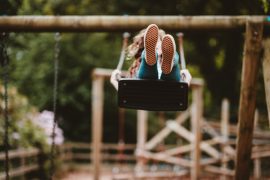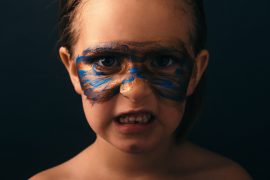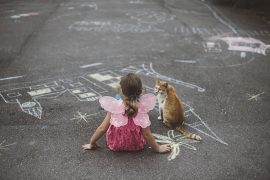By Alex Koster
More and more people are suffering from anxiety due to many different factors relating to our modern lifestyle among other things and unfortunately this trend increasingly affects our children.
Anxiety is a very abstract, frightening and confusing experience and children often are unable to recognise anxiety for what it is. Unfortunately they might get into a cycle of negative self-awareness, of thinking there is something wrong with them. Children and teenagers might label themselves as strange, weird, crazy and even out of control bringing with it feelings of shame, fear and confusion.
I remember having my first panic attacks many years ago, thinking I was having a heart attack, a stroke or I was simply going to die. This might sound melodramatic to some, but that was exactly what it felt like to me, and I know I am not alone with these perceptions. I am an adult though and as frightening and confusing anxiety was/is to me, at least I have skills to try and make sense of it, to seek help and learn helpful techniques, to research and read up about it, to explain exactly what I am experiencing to family, friends or professionals.
Young children do not have these skills yet and it is important for us parents and educators to step in and help our children make sense of their experience.
A good starting point is always to give simple facts in an age appropriate and easily understandable way:
- Everybody will experience anxiety at some stage in their life.
- Anxiety is a normal response to danger or stress.
- Even though anxiety can feel scary at times, it will pass again.
- Anxiety is actually a superhero, a lifesaver and protector. It gives us great powers and energy to flee or fight should there be real danger (see description of physical reactions below).
- Anxiety is not a weakness, it has nothing to do with strength or courage or the lack thereof.
What actually happens when we experience anxiety?
Anxiety is firmly rooted in our evolution and it used to be our survival instinct thousands of years ago. Anxiety triggered our fight or flight response when we were in real danger from predators for example. The physical processes that happen in our body will help us in an instant to deal with a dangerous situation and either run away or fight for our lives. As this reaction is instant, we disconnect from rational thinking and get into an instinctive mode.
The part of our brain responsible for this response is the “amygdala”, which acts like a fire alarm when it thinks we are in danger and it triggers the following physical reactions:
- Our breath becomes very fast and short in order to preserve oxygen that can be sent to our muscles instead, for us to be able to run or fight: We might feel out of breath, blood rushes to our face and it might feel hot.
- “Energy” is sent to our arms and legs in case we have to flee or fight: Our limbs might feel tense or even numb and tingly.
- Our heart starts to beat faster in order to get oxygen to everywhere in our bodies fast: We feel our hearts racing, sometimes beating so hard we can feel it in our throats.
- Our body starts to cool itself down in order for us not to overheat while running for our lives or fighting a dangerous attacker: We start to sweat.
- In order to save energy our digestive system shuts down temporarily: We might feel the urge to run to the loo or we have a sore tummy.
- As in our modern life anxiety often is a “false alarm” and we don’t run or fight, oxygen accumulates and the carbon dioxide levels in our bodies drop: We might feel dizzy or confused.
Unfortunately our survival instinct does not seem to be very compatible with our modern life. Thousands of years ago life was very simple, basic and clear. Situations were often predictable and there were few distractions. Our alarm system was our protector, it literally saved our lives and clearly told us: “Run, there is a lion approaching”, or “There is a storm coming, let’s get back home quickly!”. Nowadays there is so much stimulation, distraction, activity and general busyness and it seems our amygdala often misinterprets these sensory stimuli as actual danger.
See next page for what we can do to help our children (and ourselves)…











